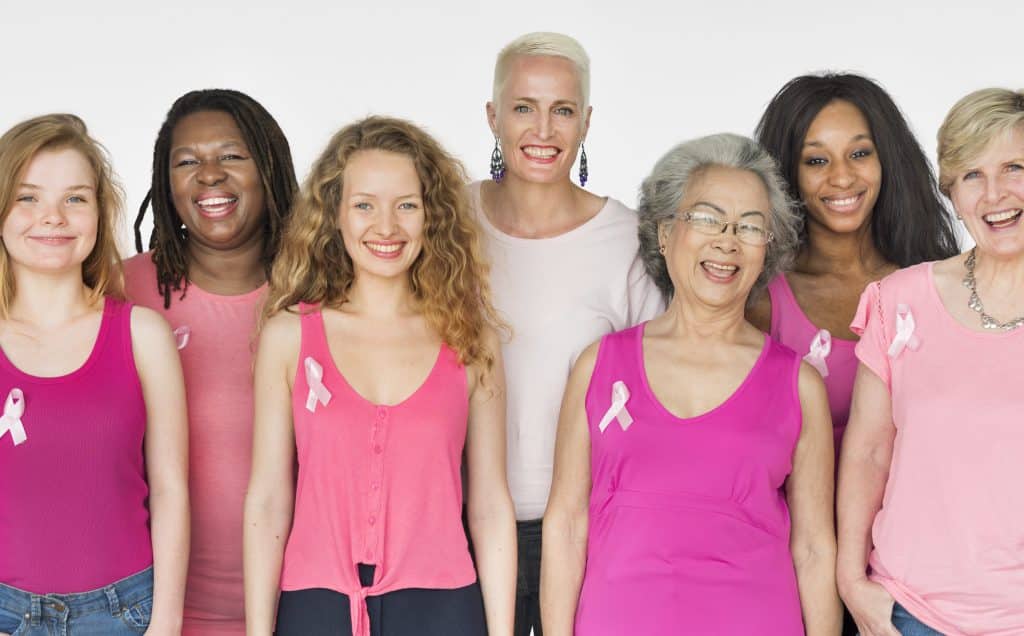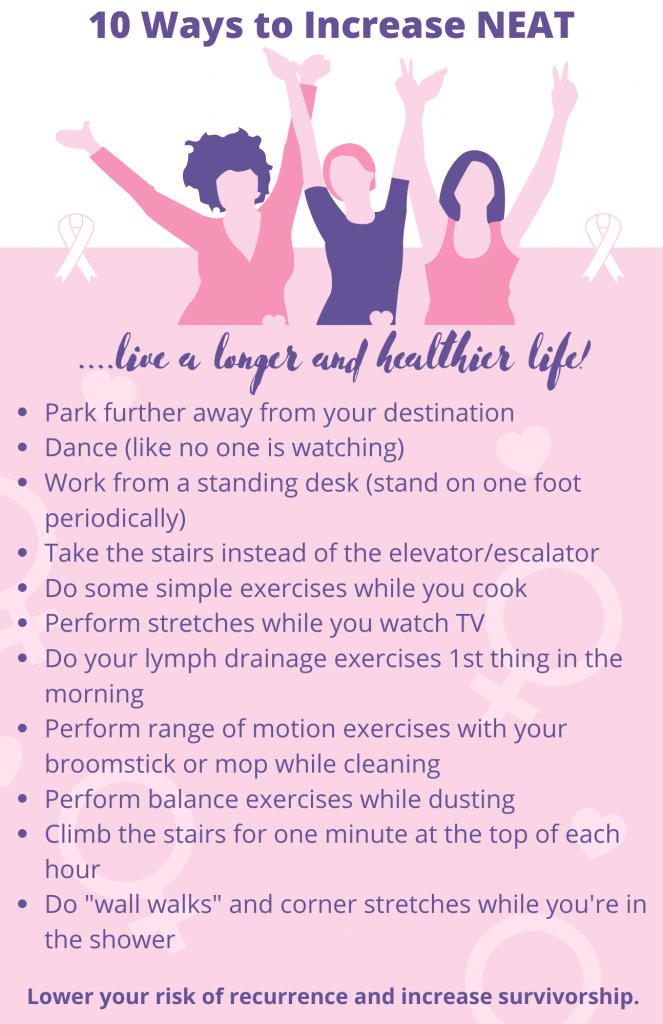Exercise is Critical for Breast Cancer Prevention and Recovery

Exercise for Breast Cancer Prevention
Women who get regular exercise (physical activity) have a lower risk of breast cancer than women who don’t exercise. Overall, women who get regular exercise have a 10-20 percent lower risk of breast cancer risk than women who aren’t active. This benefit is seen most clearly in postmenopausal women.
The American Cancer Society recommends getting 150-300 minutes (2½-5 hours) of moderate physical activity a week, or 75-100 minutes (about 1-2 hours) of vigorous activity. This amount of activity is linked to a decreased risk of cancer overall.
You do not have to get all of the weekly activity at one time.
Moderate activities include walking, mowing the lawn and slow dancing. Vigorous activities include jogging, playing tennis and swimming.
It’s not just intense exercise that’s related to a decreased risk of breast cancer. Women who get activity equal to walking 30 minutes a day have about a 3 percent lower risk of breast cancer than women who aren’t active.
Exercise can help with weight control. Women who are lean have a lower risk of breast cancer after menopause compared to heavy women. Being active may also lower blood estrogen levels and women with lower blood estrogen levels have a lower risk of breast cancer than women with higher levels. And, exercise may boost the body’s immune system so it can help kill or slow the growth of cancer cells.
Exercise for Breast Cancer Recovery
Proper exercise programming not only minimizes treatment side-effects and may improve tolerance, but it can aide in recovery from surgery and treatment as well. Following breast cancer surgery, reconstruction, and or radiation patients are often left with painful and functionally limiting muscle imbalances and shoulder range of motion issues. These can be minimized or eradicated with proper exercise programming. Following lymph node removal and/or radiation patients will have a lifelong risk of lymphedema (swelling of the affected side/limb) that can be painful, functionally limiting, and disfiguring. This, too, may be minimized or entirely prevented with an appropriate exercise prescription and slow gradual progression.
Non-Exercise Activity Thermogenesis (NEAT) is the energy expended for everything we do that does not include sleeping, eating, or exercise; and ranges from simple things like standing and fidgeting to moving about.

Exercise for Survivorship
Some studies show being active is linked to a lower risk of :
- Breast cancer-specific mortality (death from breast cancer)
- Overall mortality (death from any cause, not necessarily breast cancer)
To learn more about exercise for breast cancer please visit ceti.teachable.com and check out our YouTube channel-Cancer Exercise
